What to Bring Camping: How to Prepare Yourself for A Vacation in Nature
Camping is an experience that can be very relaxing, character-building, and an escape from all the stress of modern day living. However if you don’t know what to bring camping and you simply venture out unprepared, things can take a rather dangerous and frightening turn.
[the_ad_group id=”21″]
Indeed survival in nature is not easy, especially when you don’t have everything you need at your disposal. That being said, there is a simple and efficient 6 point list that covers all the basic needs of anyone and everyone that is about to go camping.

Please note that this list is based on human needs rather than luxury and comfort, without it being as strict and severe as military survival rules.
The Camp Site
These are the items you’ll need to make sure everyone is comfy at the camp site
- The tent (including the stakes, frames and ropes): if you are camping in a cold region, like in the mountains, make sure that the tent is properly insulated. On the other hand, if you chose a warm region, make sure it has proper ventilation.
- Tent footprint: make sure it is slightly bigger than your tent. It will prevent wear and tear on the bottom of the tent and provide an extra bit of insulation.
- Sleeping bags + sleeping pads: make sure that the sleeping bags are properly insulated and are designed for warmth. Also, make sure that the sleeping pads are at least the same size as the sleeping bags.
- Foldable camping chairs: they are usually small and portable, lightweight and easy to carry around.
- Waste bag: usually a big plastic bag in which bottles, paper, and various other garbage are thrown to prevent littering the camp sight
- Shades and tarps (optional): this is to protect the camp site from rain or excessive sun. Usually mounted on trees or between tents in order to cover the camp site, they are not recommended if you plan to have a campfire underneath.
Apparel
This is where many problems appear because people mistake vacation apparel with camping apparel. Often people don’t realize that what they would be normally taking on a vacation is not exactly what to take camping.
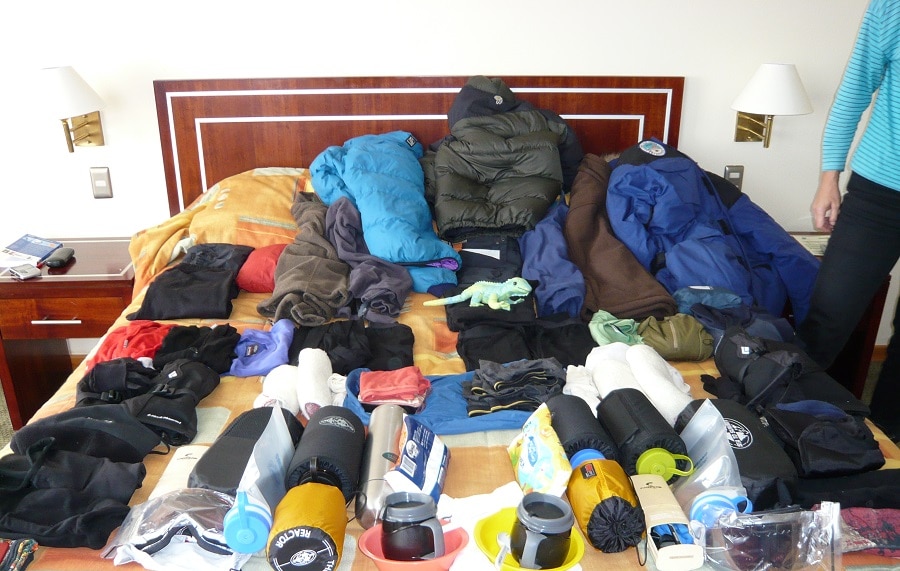
Depending on where you want to go camping you will have to dress accordingly. This means dressing and acquiring apparel in order to deal with temperatures, moisture, and other such elements, not dressing to impress. With that in mind, the usual clothing rules apply, with a few small exceptions here and there.
- Hats: you need to have your head protected at all times. Either from the sun, from rain, from moisture, cold and various other things that you will encounter, your head needs to be protected at all times. Use thinner more comfortab to camp during the winter, see our article review of the best winter hats to keep your head cozy.
- Shirts: go for cotton shirts (as breezy as possible) to prevent sweating. Sleeves must be at least elbow level (short) for warmer areas and wrist level (long) for cold areas. Make sure to use bright and visible colors in order to be easily distinguished form your surroundings and easier to find in case you get lost.
- Jackets: it goes without saying that this is something that you will most likely grab if you are going camping in colder regions like on a mountain. With that in mind, make sure that the jacket in question is resistant to moisture, preferably impermeable. Make sure that it is insulated properly thus providing warmth and it should have a hood to protect your head from rain.
- Pants: the pants are usually an issue because even when camping in warm regions it is still advisable to wear long pants in favor of short ones. This is because of all the insects and parasites that can be found in the grass and at foot level in general. Make sure that the pants are properly insulated and that they are adequate for the area you will be camping in (thick warm pants for cold zones and thin breezy pants for warm zones). Baggy / cargo pants are usually the preferred option because of their loose and comfortable fit as well as a large assortment of pockets. See our comprehensive review of the best backpacking pants to give you more choices.
- Footwear: again, another area that is largely misunderstood. When it comes to camping, flip-flops, slippers, sandals and other open style footwear is not a safe choice because of all the insects and parasites that can be found lurking in the grass at ground level. That being said, the footwear that you will be taking needs to cover the whole foot, be properly insulated, be resistant to moisture, rough terrain and still provide a lot of comfort.
The only proper footwear to use when going camping is either sports shoes (running shoes with thicker soles) or boots. Make sure that they are a proper fit, not too tight and not too lose, and easy to walk in. Also, make sure you air them out regularly and that you maintain proper foot hygiene in order to prevent foot fungus and other infections. - Eyewear: This one is pretty straightforward: sunglasses. Make sure that they cover your eye’s entire range of motion, as well as your peripheral vision. Polarized sunglasses are preferred because of the polarization of the lens that minimizes the impact that reflections have on your eye.
- Accessories (optional): Gloves, scarfs, bandanas, and so on. They are not required or vitally important, yet they can offer that extra bit of protection and insulation if need be. Looking for toasty gloves? Find out more in our reviews of the best backpacking gloves.
Simply make sure that they are tough, capable of coping with camping conditions, and that the fabric itself can withstand moisture and prolonged wear and tear.
Rations of Food and Drinks
This part of the list refers to the food and water you will be taking with you on your camping trip. The amounts are flexible, and it depends on how long the trip will be.
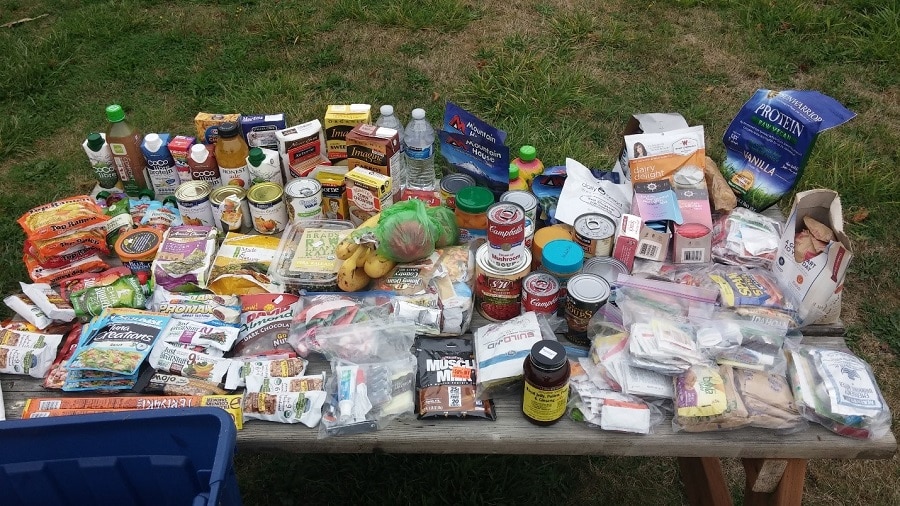
Feel free to bring an excess of rations, more is never bad when it comes to this aspect.
- Water: Considering that the ideal camp site should be next to fresh running water, there might not be a need to bring gallons upon gallons of water with you. If the camp site has a source of fresh running water in its close proximity, a simple canteen of water will suffice. You will be able to get water from the source, boil it in a metallic cup over a fire, let it cool and then drink it. However, if you were unable to find a campsite next to running water, you will have to bring some water with you.
- Dry Food: it is always a good idea to have dry food on you when you go camping. You can cook up a quick soup, mashed potatoes, and anything along those lines by simply adding water and putting the pot over a fire. Another great advantage, if you are not that big of a fan of cooking in the wilderness, is the fact that dry food, most of the times, can be eaten in its dry state to relieve hunger.
- Meat: this is riskier to bring along on a camping trip simply because of the fact that meat will go bad and become inedible if not kept in freezing temperatures. It is always recommended to keep the amount of meat to a minimum and, preferably, in a small cooler. It should be enough to feed the campers for 2 maybe 3 meals, and is usually the first to be eaten. Keep in mind: Make sure that your campsite is in an area without wild animals (especially predators). The smell of the meat will lead them right to you.
- Vegetables: these are always a welcome for multiple reasons:
- they don’t need refrigeration,
- they don’t need special storage conditions,
- you can take as many as you want without fearing that they will go bad.
An exception to this rule is represented by juicy vegetables like tomatoes and eggplants. However, the rest will complement your camp meals quite well.
- Snacks: contrary to popular belief, snacks are actually great in a camping environment. They can satisfy hunger quite efficiently, prolong the consumption of food rations and can be generally used to improve meals or even substitute them all together. The only thing to watch out for with snacks is to not litter, and to make sure that all the waste and garbage is neatly picked up and placed in the waste bag or bags.
- Soft drinks: a more pleasant alternative to water but not a complete substitute for The only issue here is with cooling the drinks. One solution is to tie the bottles with rope to a rock and submerge them in a running river. The cold water will cool them and the rocks will keep them from being taken by the current.
- Alcoholic beverage: beer, cocktails, and a wide variety of other such drinks go well with a barbeque or with the meat you have roasted over the camp fire. It is a camping trip after all, not a desperate battle for survival, so such drinks are not only permitted but also recommended if you want to relax and have fun. They help take the edge off and can make you feel a bit loose and relaxed.
- Spirits: there are many reasons to bring spirits with you on a camping trip. Besides the obvious drinking of said spirits, which should be done with limits and in moderation, the consumption of spirits can make you feel a bit warmer, especially in colder regions. There are auxiliary usages for spirits as well as they can double up as medicinal alcohol, fuel to start the fire and even to ward ants and other creepy crawlers away from your tent.
Food and water are always a big concern when camping. There is always the possibility that you will run out of supplies or that something will happen to your current supplies. That being said, you should always pack some extra emergency supplies before leaving.
[the_ad_group id=”22″]
For instance, canned food, sterilized jar food, general food that lasts a long time and comes in a small and easy to carry container are great solutions to have as supplies.
Another thing to note here is the fact that it would be a good idea to have a resupply plan in case something goes wrong. Make sure that you are either in walking distance or driving of a supply store if you have a car at your disposal.
Tools
Remember that you are essentially going into the wild and there are a lot of luxuries and amenities that you will not have at your disposal.
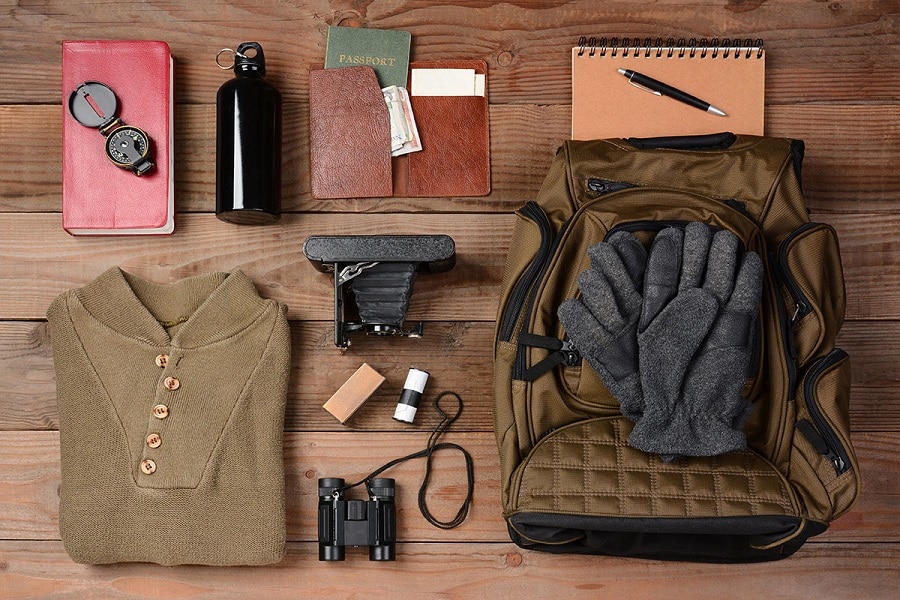
That being said, you will have to make do with what you have and what nature is offering you. To do that you will need some tools at your disposal.
- Map & Compass: it goes without saying that getting your bearings is of utmost importance, and a map and compass are irreplaceable in this situation. Make sure that the map is up to date and that the compass is clear, easy to read and above all else accurate.
- Hygienic kit: This kit contains items that will help you improve and maintain your level of hygiene. Things like deodorant, soap, toilet paper, clippers, cotton swabs, antibacterial wipes (just to name a few) should be included in such a kit. Be sure to pay close attention to your hygienic needs before assembling your kit though.
- Multi-tool: this is basically a tool that can be unfolded into many other tools. Compact, easy to carry around and use, these tools have something for every occasion. One classic and well-known example, is the iconic Swiss Army Knife, as well as various other forms that these tools can take. The number of tools can get quite ludicrous so make sure that you have one that at the very least covers all the essential actions.
- Knife: at first glance this might seem redundant given the above mentioned multi-tool, however when something needs cutting, either a vine, a piece of fabric and so on, there is no replacing the good old trusty knife. Make sure that the size of the blade is within legal limits though.
- Hatchet: by far one of the most useful and underappreciated tools when it comes to camping, the hatchet is a must-have. A small hand axe or hatchet is invaluable and can help you gather wood, set up your tent and take care of the vast majority of things that need taking care of while camping in the wild. Make sure that the hatchet meets the legal requirements first.
- Flashlight & batteries: nobody likes to waddle around in the dark hoping to find what they are looking for, or the camp itself, by pure luck alone. Not to mention that you can also use a flashlight to signal someone or something at a distance, scare away animals that wander too close to your camp, and provide general lighting for your camp at night.
- Insect repellent: when camping, bugs are the most common problem you will encounter. Mosquitos are the most well-known and obnoxious insect pest that troubles campers, followed closely by ants. That being said, insect repellent can be a godsend and actually protect you from these pesky little bugs.
- Metal cups, plates / bowls (optional): the reason behind the popularity of metallic plates, cups, pans and pots on a camping site is that you can boil and cook anything in them right on the fire, without having to worry that they will melt, shatter or break because of the heat.
Emergency Items
Unfortunate things can happen, and unforeseen things happening on a camping trip can have disastrous consequences if not prepared.
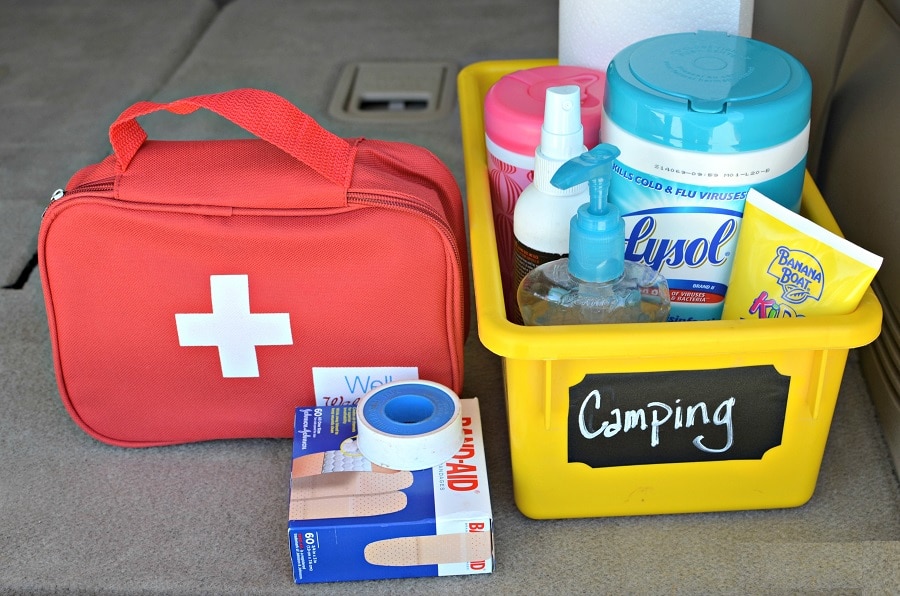
Here are some basic emergency items you should have on hand, in case anything wrong happens and you need to take immediate action.
- Medical kit: the good-old-fashioned emergency medical kit is always a good choice to have on hand. Most kits are rather basic, giving you the necessary tools and supplies to treat minor wounds and give first aid.
- Fully charged cell phone: remember that for this to work you will have to be in an area that has cell coverage. The idea is to buy a cheap old phone that has a very long battery life and a prepaid SIM card that can be used to contact the authorities or rescue services if the need arises.
- Flares (optional): this is one of those things that seems a bit off the charts but if you end up lost in the woods and you need a way to signal people, those flares can become very useful very fast.
Fun and Leisure Items
You are making this trip in order to relax and get away from it all, right? So why not cover the leisure section as well?
[the_ad_group id=”23″]
There are a lot of things that you can take with you in order to have fun, either by yourself or with other people. Here is a short list
- Deck of Cards: the classical choice for any trip or any situation. You can play a lot of games with them, either by yourself or with other people, and often times they can even help start a conversation.
- A book: every now and again, the most relaxing experience you can have is to curl up with a good book next to a camp fire and enjoy the story.
- Games: this actually includes a lot of things. From board games to handheld video games, or even outdoor activities such as tennis, soccer and even badminton, the possibilities are endless. Just make sure that you know how many people are coming, as well as what their likes and dislikes are and you will be picking the right game for the right opportunity.
Have A Fun Camping Trip!
There are a lot of things people tend to pack for a camping trip that are unnecessary, and many essential things are left behind for that matter. We hope that after you read our list, your camping trips will be just perfect as now you know what and how much to take.

Try and remember that camping is indeed fun, but it also requires a lot of preparation. So, make sure that you go over our list before you go camping, and you will never have to worry about anything while you are out there in the wilderness. Also, if you feel we left something out, we’re waiting for your opinion on comments.




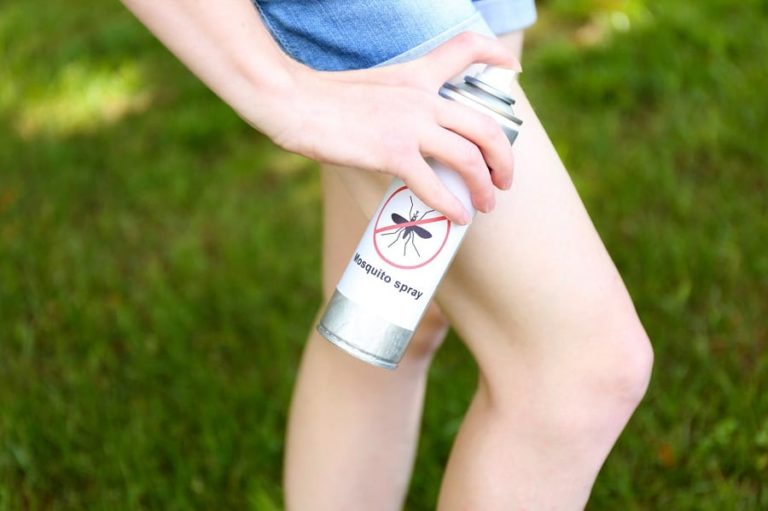


There is so much to consider before going on a camping trip. I don’t agree on the alcohol part of this article, simply because one should not be drinking while camping. There are a lot of gears that you should take with you when camping, but if you are trying to be cost effective, i think you should stick to the important survival basics.
To each his own, Jason. However, that is quite subjective, especially when the camper doesn’t drink so that is definitely scratched off the list.
Backpack, sleeping bag and carimate are things without which the camping is impossible. Of course, you can go with a bag, a blanket and a hammock, but after that you will never want to go camping!
The backpack should be of such a volume that would get everything into it and nothing was outside. For men it is 80-100 liters, for women – 60-90. You can walk with a backpack a smaller amount, but some things could be tied on the outside. Such backpack won’t be so windproof and in case of rain, these things surely will get wet. It is better to take a larger backpack, such as 130 l., which would be possible to pull up, but backpack with a size of 40 l. you won’t be able to increase.
These are helpful pointers and information, Bruce. The things you have to bring and you actually brought at site will determine the quality of your camping experience. While it is not encouraged to bring everything, critical evaluation of what things to bring is really important.